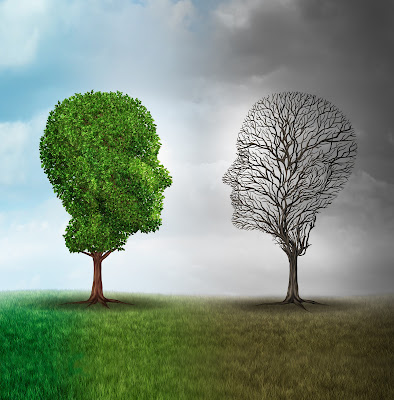Many times we are asked by current or future clients why we chose the path we have in regard to the services we provide. The simple answer is - We continually learn, research, try out, and keep what helps our clients achieve health and wellness. That simple answer is the tip of the mountain of "why." For those who want more detail, as to our "why," I'll do the best I can to explain how we came to where we are today with our philosophy.
We are all complete, whole, complex beings. There are no parts that are divisible from other parts. In order to make sense of things, humans try to simplify things. That simplification complicates the understanding of the complexity of wellness. In order to help expand awareness, I use the terms: physical, mental, emotional and spiritual to explain various areas of our human package. But, this is still weak in terms of describing our human nature. In reality, there are no divisions in our human nature or the world around us. We are complex miracles of existence, as is all of nature. So, the following explanation I provide is flawed. The fact is, no one can really explain our existence. To do so travels into the realm of trying to explain the un-explainable.
The gift of life comes with an amazing capability of self-preservation and self-healing. In our Western model of allopathic medicine, we rely heavily on drugs or surgery to help us stay alive and healthy. Sometimes we get lost in thinking that these methods are actually "healing" techniques. I am not really aware of any drug or surgery technique that "heals." Our modern methods really provide a opportunity that gives a compromised person's body the ability to "heal" itself. As a drastic example, if a person can't naturally keep up with immune system responses to cancer; a surgeon will cut out the bad spot in order to let the body focus on keeping the rest of the person healthy and heal. A broken bone is put in a cast to immobilize it so that the body can heal the bone. In many cases, drugs are prescribed to relieve symptoms so that, while our body takes time to fight off illness, the pain or yuckiness is more bearable. In almost all cases - even modern medicine is an attempt to let the body heal itself. We are our own best "healer."
If you believe what I have said makes sense or sounds true, then it positions us to have a better understanding of why we offer our types of services. Our primary goal, a pretty singular goal, is to help a person be in the best position possible to be hardy, healthy and naturally be able to maintain their health and wellness. Since we are complex Beings, we offer services that address (please remember, even as I say this it is an artificial division of a person) physical, mental, emotional and spiritual areas of wellness.
Given the chance, our parasympathetic nervous system (PNS) (a portion of the autonomic nervous system) is designed to help us naturally heal and repair ourselves. The PNS is often called the "rest and digest" system. At different times such as when we sleep, rest, meditate, are in a hypnotic state, relaxed from a massage... any time when we are relaxed, the PNS helps our immune system be hardy and our body to heal itself.
Unfortunately, because not much in life is simple, there is another system that opposes the beneficial effects of the PNS. Still part of the autonomic nervous system, the sympathetic nervous system (SNS) is known as the "fight or flight" system. We need this system too! I don't want to stress you out - but, can you imagine if an animal were attacking you? In that situation, you don't want to be relaxed, muscles loose, breathing easy; you need a lot of blood to the muscles, deep breathing, quick responses, improved eyesight... you need to escape and survive. The SNS has a very good and specific purpose.
The problem is that as we have evolved, the kinds of stress we handle aren't much about escaping from wild animals anymore. Our stress might be long work days, financial, emotional, heavy lifting, family issues. Our stress can be become non-stop, unrelenting, and insidious. The SNS is not designed to be kept at high alert all the time. In fact, after a while, constant stress is mentally, emotionally and physically overwhelming. We could not function if we were actually aware of that stress, so our bodies habituate to the stress.
Have you ever entered a room with really loud noises, bright lights or strong smells? When you walk in the room it hits your pretty hard; but, after a while, you don't seem to notice the impact of those obnoxious issues. That is an example of habituation. In order to help us function, our body has an ability to tune out things that are overwhelming to us - even physical pain. Habituation comes into play even with constant stress. Eventually, we tune out the stressor. The stressor still exists, we just become numb to it. However, because the stressor still exists, the SNS is still active and in a higher level base line activation state. Whenever the SNS is highly active, the PNS can not be active. Normally the SNS and PNS balance each other. In sustained stress situations, the SNS overrides the ability of the PNS to do its job and we aren't even aware. We may not know how much stress we are under. We are habituated to stress. This situation leads to suppressed immune system function and a subsequent inability of the body to remain healthy or heal itself naturally - enter drugs, surgery, hypertension, cardiac issues and proliferation of cancer. This is a simplified explanation and there are many variables, but for the most part, this is a true story.
Tada! We now arrive at our "why" we chose an apparent strange mix of services and offerings. We have chosen to try and bridge the gap between physical, mental, emotional and spiritual areas. Our education, experience and services are designed to, directly or indirectly, help our clients reduce stress, become more centered and balanced, and improve the ability of their PNS to do its job.
Welcome in the PNS; settle down the SNS. When the PNS functions are more apparent, people can reacquaint themselves with their stressors (which may have become invisible to them due to habituation) and develop strategies to minimize the negative impact on their health and wellness. We use what we have found to work: massage & bodywork, counseling & psychotherapy, therapeutic hypnosis, meditation, Reiki, breathing, aromatherapy, herbology, Shamanic practices...
Please take a moment to look at the picture at the beginning of this article. True balance can be a matter of perspective. Holistic wellness requires holistic balance. Energy stagnation or congestion encourages illness. Smooth energy flow encourages health. Each one of us is our own best healer. Now and in the future, you can choose to be healthier and happier, isn't that so?


















